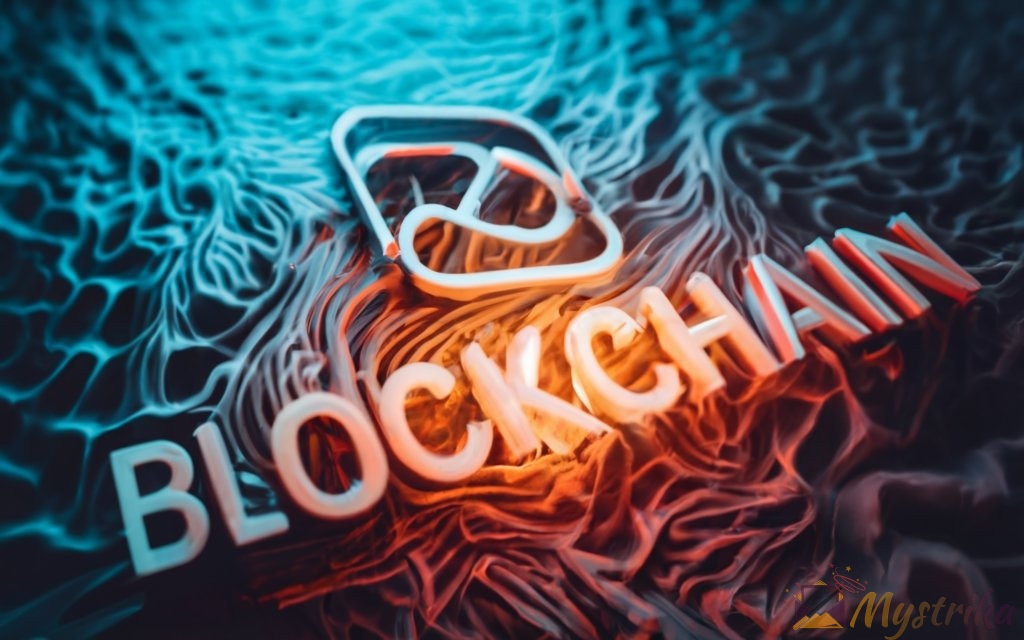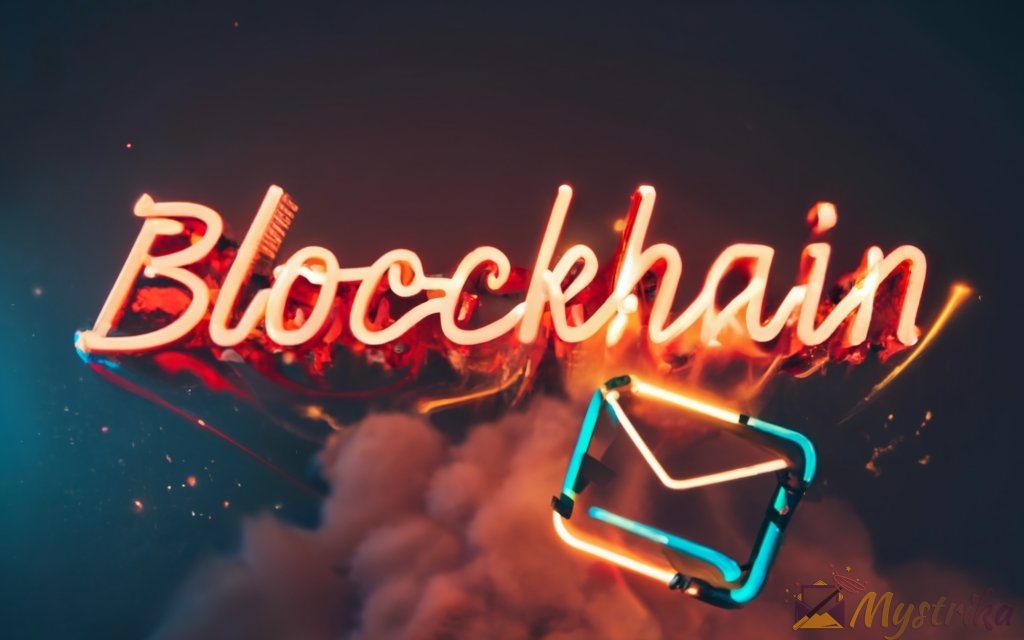The internet transformed communication, but email still struggles with privacy, security, and control. Yet emerging solutions are brewing a revolution using blockchain’s decentralized power.
This guide explores how blockchain email works, its core benefits, top platforms to try, and why the technology promises to upgrade email as we know it. The possibilities are exciting! Whether you’re a crypto enthusiast or simply care about privacy, understanding this rapidly evolving ecosystem is essential.
Read this guide to understand how decentralized encryption is revitalizing email privacy for the 21st century.
What is Blockchain Email and How Does it Work?
Email is one of the most widely used forms of communication, both for personal and professional needs. But despite its ubiquity, traditional email suffers from serious issues like lack of privacy, spam, and security vulnerabilities.
Blockchain email aims to address these problems by reinventing email with decentralization, cryptography, and distributed ledger technology. But what exactly is blockchain email and how does it differ from what we’re used to? Let’s break it down.
Defining blockchain email
At its core, blockchain email is a communications protocol that allows users to send and receive encrypted messages over a distributed network of nodes, rather than routing everything through a central server as with conventional email providers.
Instead of a centralized architecture, blockchain email relies on peer-to-peer networks and cryptographic techniques to secure communications end-to-end. Messages are encrypted before being sent and can only be decrypted by the intended recipient using their private key.
This eliminates the need to trust any third-party email providers because even the platform itself cannot access users’ private communications. The encryption happens client-side, on the users’ own devices.
Additionally, blockchain email incorporates distributed ledger technology to immutably record all communications metadata while maintaining the privacy of message contents. This metadata includes details like timestamps and sender/recipient addresses.
By distributing this metadata across many nodes in a decentralized network, there is no central point of failure. The record of all communications is permanently secured in a tamper-proof way.
How blockchain email differs from traditional email
Here are some of the key differences between blockchain email and conventional email:
- Encryption – Blockchain email encrypts all messages end-to-end by default. Traditional email is largely sent in plaintext over the open internet, creating security and privacy risks.
- Decentralization – There are no centralized servers to store user data or control networks. Blockchain email operates on distributed peer-to-peer networks.
- Identity management – Users have sovereign control over their identities and can create blockchain-based email addresses decoupled from real-world IDs.
- Immutable records – The record of email communications is permanently and transparently secured on a distributed ledger.
- Spam prevention – The cryptographic architecture makes it much harder for spammers to operate at scale.
- Phishing resilience – Blockchain PKI makes spoofing identities more difficult. Messages are verified as authentic.
- No advertisements – Without centralized entities monetizing user data, there are no bothersome ads in blockchain email.
| Traditional Email | Blockchain Email |
| Centralized architecture | Decentralized P2P architecture |
| Unencrypted messages | End-to-end encryption |
| Messages stored on company servers | Messages stored on distributed ledgers |
| Subject to hacking and data breaches | Enhanced security and lower risk |
| Open to spam and phishing | Resilient to spam and spoofing |
| Ads and tracking | No ads, more privacy |
This comparison shows how blockchain email flips the conventional paradigm in order to prioritize user security, privacy, and control over their digital communications.
Understanding blockchain email architecture
Under the hood, blockchain email relies on some key components to enable its enhanced security model:
- Distributed ledger – An immutable record of all email metadata is stored on a decentralized blockchain or similar distributed ledger technology like Hashgraph or Holochain. This prevents a single point of failure.
- Cryptographic identities – Users generate blockchain-based addresses like 0x4916D… which act as their email identities and are tied to their encryption keys. These help prevent spoofing.
- Asymmetric encryption – Users have both a public and private key. The public key allows others to send encrypted messages to a user, while only that user’s private key can decrypt it.
- Metadata references – Messages contain hashed references to metadata stored on chain. This preserves privacy while still immutably recording essential details.
- Off-chain storage – Message contents are stored off-chain in decentralized storage like IPFS to reduce blockchain bloat.
- Proof-of-Work – Steps like PoW prevent spam and DDoS attacks by rate limiting messages.
By combining techniques like these, blockchain email architectures can offer the security and resilience of blockchain with the familiar usability of email communications.
Key components of a blockchain email system
There are a few core components that different blockchain email platforms have in common under the hood:
- User wallets – Wallets manage users’ identities and encryption keys. They allow signing/validating messages.
- Decentralized nodes – A distributed network of nodes replaces central servers and provides redundancy.
- Consensus mechanisms – Protocols like PoW, PoS, etc enable nodes to agree on the canonical ledger state.
- Smart contracts – Self-executing code handles email transmission rules and logic.
- Off-chain storage – IPFS, Swarm, Sia, Storj etc provide distributed storage for message contents.
- Delivery integrations – Bridges allow sending to and from non-blockchain addresses.
- Client applications – User-friendly apps and interfaces for desktop and mobile access.
- Developer APIs and SDKs – Tools to build integrations and applications on blockchain email platforms.
The blend of these solutions allows blockchain projects to layer email-like usability on top of the security and resilience of decentralized infrastructure.
While the underlying technology differs from traditional email, the user experience can remain familiar. When integrated properly, blockchain email stands to completely redefine how we communicate digitally in a more secure and self-sovereign way.

Benefits and Advantages of Using Blockchain Email
Despite email’s popularity, most people recognize that traditional email services have some glaring flaws when it comes to privacy, security, and control. Centralized architectures introduce vulnerabilities that have left users frustrated for decades.
Blockchain email offers solutions to many of these problems by rethinking email from the ground up with decentralization. Let’s explore some of the key benefits and advantages of using blockchain email.
Improved privacy and security
Privacy and security are two of the main advantages of blockchain email. By removing central points of failure and third party access, blockchain email enhances privacy while also improving security.
End-to-end encryption
All messages are encrypted locally before they leave the sender’s device and can only be decrypted by the recipient. Not even the platform or network nodes can access the content of communications. This protects privacy.
On-device key storage
Users’ private keys are stored locally on their devices rather than held centrally on company servers. This reduces risks from data breaches.
Decentralized infrastructure
Without centralized servers, there is no central repository of user data vulnerable to security incidents or surveillance. Blockchain email removes these risks.
Resilience to spoofing
Blockchain’s PKI structure makes it difficult for scammers to spoof legitimate email addresses or identities. Communications can be authenticated.
Metadata privacy
Only hashed references to metadata are stored immutably on chain, preserving informational privacy while still verifying transactions.
No third-party access
ISPs, vendors, and other third parties have no way to access or monetize user data, offering enhanced confidentiality.
In essence, blockchain email minimizes the number of trusted intermediaries who can compromise security and privacy. Users need only trust themselves and the encryption protocols.
Reduced risk of data breaches
Centralized databases filled with user info have proven irresistible targets for hackers and bad actors. But decentralized blockchain email greatly reduces the risks from data breaches in a few key ways:
- No central honeypot of data to target
- Messages encrypted end-to-end by default
- User identity & keys stored locally on-device only
- Metadata hashed/obfuscated before storage on-chain
- Historical messages stored off-chain in decentralized storage
This means one compromised node cannot expose much useful user data or communication history, limiting the impact of potential breaches. Attacks against user privacy become orders of magnitude more difficult.
Databases like the River City Media spam list show over 7 billion compromised email addresses and passwords from various breaches and exploits over the years. Blockchain email architectures effectively prevent this scale of personal data leakage.
Eliminates spam and phishing attacks
By some estimates, spam emails account for as much as 90% of all email sent globally. But the decentralized nature of blockchain email makes it far more resistant to spam campaigns.
Solutions like proof-of-work create monetary costs to sending email at scale, limiting spammers. The lack of central user databases also makes it harder for spammers to harvest email addresses.
And verified blockchain identities reduce the potential for phishing by ensuring emails originate from legitimate accounts. Spoofing addresses is extremely difficult.
Ultimately, the cryptographic architecture of blockchain email severely restricts the viability of spam and phishing, restoring confidence in digital communications.
Enhanced control over data and identities
In traditional email, users must relinquish control over their private data and identities to email providers. But with blockchain email, users regain sovereignty.
You fully own your blockchain-based email address, built on your own keys – not leased from a provider like Gmail or Outlook. The provider cannot revoke, suspend, or censor your address at their discretion.
Communications also become part of your permanent record rather than being locked into a company’s silo. If you switch providers, your message history follows you rather than becoming inaccessible.
This portability and interoperability gives users unprecedented control over their digital communications and identities on the blockchain.
Immutable record of communications
Blockchain’s core capability is providing an immutable, tamper-proof record of transactions. Applied to email, this enables a permanent audit trail of communications metadata.
While message contents remain private, the fact that emails were exchanged is verifiably recorded on chain. This could have useful applications:
- Legal record keeping – Tamper-proof evidence for legal proceedings, safe from deletion.
- Regulatory compliance - Audit trails for financial services communications compliance.
- Leak prevention – Communications metadata is public, discouraging damaging leaks.
- Authenticity – Verify the origin and integrity of important messages.
Of course, there are arguments both for and against an immutable communication ledger from a privacy perspective. But the benefits are clear for record keeping applications.
Key Takeaways on Blockchain Email Benefits
- Vastly improved privacy and security compared to webmail.
- Resilient to data breaches with decentralized infrastructure.
- Reduces viability of spam and phishing attacks.
- Puts control over identities and data back into users’ hands.
- Provides a transparent, tamper-proof record of communications.
By leveraging blockchain’s innate security properties, the next generation of email platforms promises to be more private, secure, permissionless, and censorship-resistant. The advantages over legacy email are clear.
As blockchain email solutions mature, they offer an exciting glimpse at how decentralized technologies can meaningfully improve people’s digital lives. The possibilities are only beginning!

Top Blockchain Email Platforms and Providers
A growing number of projects are working to build email solutions on blockchain architectures. While the space is still emerging, there are already several noteworthy platforms offering enhanced security, privacy, and decentralization.
Let’s take a look at some of the top contenders in the blockchain email ecosystem so you can evaluate the different options.
Cryptamail
Cryptamail is an end-to-end encrypted email service developed on the NXT blockchain. As one of the earlier attempts at blockchain email, it pioneered concepts like storing communications metadata immutably on chain.
Overview and features
Some core features of Cryptamail include:
- Decentralized architecture without central servers
- End-to-end encryption for messages
- Emails indexed and timestamped on the NXT blockchain
- User identities tied to blockchain addresses
- Open source codebase with no proprietary algorithms
Cryptamail essentially functions like a normal email service, but without relying on traditional email protocols like SMTP, POP3, and IMAP. Instead, everything is routed through the NXT blockchain network.
Pros and cons
Pros:
- Strong encryption and privacy protections
- No central entity can censor communications
- Open source ethos enables transparency
- Early mover in the blockchain email space
Cons:
- Unclear whether active development is ongoing
- Smaller user base than more recent solutions
- Limited to NXT blockchain only
Overall, Cryptamail deserves credit for being one of the first decentralized and encrypted communications platforms on blockchain technology.
ProtonMail
ProtonMail is one of the most widely used encrypted email services with millions of users worldwide. In recent years, they have been expanding into broader privacy and security tools.
Overview and features
Some key features include:
- Default end-to-end encryption for all emails
- User data protected by Swiss privacy laws
- Open source encryption libraries (OpenPGP)
- Onion routing via Tor to hide metadata
- User-friendly email interfaces and apps
- Suite of other services like ProtonVPN, ProtonCalendar, etc.
ProtonMail prioritizes making encryption and privacy accessible for the mainstream public.
Pros and cons
Pros:
- Strong reputation with millions of users
- Expanding suite of privacy services
- Swiss legal protections for data
- Easy-to-use encrypted email with recovery options
Cons:
- Not fully decentralized, servers still centralized
- Metadata still visible to platform and network
- Requires trusting Swiss jurisdiction
ProtonMail offers solid encryption options, but trails newer providers in decentralization.
Mailchain
Mailchain focuses on blockchain-based messaging and communications using end-to-end encryption. They are building an ecosystem of integrated email, social, and financial services.
Overview and features
Some core Mailchain functionality includes:
- Emails secured via user’s blockchain addresses
- Messages encrypted end-to-end by default
- Compatibility with Ethereum, Tezos, ENS and other chains
- Clean and intuitive email interfaces
- Alphanumeric blockchain addresses for ease of use
- Developer APIs and SDKs
Mailchain aims to bring blockchain-powered communications to both individuals and developers.
Pros and cons
Pros:
- True end-to-end encryption with user key control
- Simplifies messaging across different blockchains
- Privacy protections like alias addresses
- Easy onboarding directly from web browser
Cons:
- Requires Web3 savvy to use properly
- Message contents stored off-chain
- Smaller ecosystem than some competitors
Mailchain is targeting the expanding Web3 community demographic specifically.
LedgerMail
LedgerMail develops blockchain-based communications tools focused primarily around decentralized and private email powered by encryption.
Overview and features
Some notable LedgerMail capabilities:
- Emails secured by users’ public keys
- Default AES-256 bit encryption
- Email historical record stored on blockchain
- Ability to send to non-blockchain email addresses
- Suite of mobile and desktop email apps
- Features like email recall and self-destruct
The platform aims to balance encryption and privacy with usability.
Pros and cons
Pros:
- Strong focus on email-specific user experience
- Can message outside blockchain recipients
- Layered encryption model for security
- Recall and self-destruct features
Cons:
- More centralized than some other solutions
- Proprietary algorithms rather than open source
- Metadata visibility limitations
LedgerMail is optimized for convenient adoption by regular email users.
Key Takeaways on Blockchain Email Platforms
- A range of emerging projects are targeting encrypted and decentralized email use cases.
- Different platforms have distinct tradeoffs between decentralization, usability, and features.
- Open source providers offer greater transparency than proprietary systems.
- More adoption is still needed, but the progress is promising.
There are an increasing number of options for those looking to experiment with blockchain-based approaches to email. As the technology matures, it could soon revolutionize how we communicate and transfer information online.

How to Get a Blockchain Email Address
Once you decide to give blockchain email a try, the next step is obtaining your own address. There are a few different options for getting set up depending on your preferences.
Using a blockchain email provider
The easiest way to get started is by signing up with a provider of blockchain email services like those covered in the previous section.
Here’s a quick overview of the process:
- Select a provider and visit their website to begin registering for an account. Popular options include ProtonMail, Mailchain, and LedgerMail among others.
- Follow the provider’s signup process which will involve generating a new blockchain address that will serve as your email identity. This usually entails creating a private and public key pair.
- Once registered, you will be able to access your inbox through the provider’s web apps or dedicated email clients. Your blockchain address can also be used to receive emails from outside senders.
- Depending on the provider, you may also go through an additional validation step to associate your new address with your existing identity. This is optional for privacy purposes.
- Start using your blockchain email address to send and receive encrypted communications! Usage is similar to webmail.
The advantage of this approach is simplicity. Reliable providers abstract away blockchain complexities so you can focus on securely communicating.
Integrating a blockchain protocol into an existing email
For more technical users, another option is integrating a blockchain protocol directly into your existing email setup using bridge applications:
- Download a desktop app like Pecunia that implements the Radix or Bitmessage protocol. This enables encrypting existing email accounts through blockchain integration.
- Alternatively, explore provider API options like Mailchain which allow developing custom integrations to bridge non-blockchain addresses over to Mailchain’s blockchain infrastructure.
- Use client-side encryption plugins like TrueKeys to fortify email security via blockchain-anchored public key infrastructure. This augments existing accounts.
- Keybase offers encrypted chat and email using public key cryptography linked to user identities on Blockstack’s decentralized network.
While more involved, these direct blockchain integrations give advanced users more customization and control.
Migrating email accounts to blockchain
For those ready to fully embrace blockchain email, migrating existing accounts is an option:
- Export email history from current accounts before closing them. This data can be imported into the blockchain provider inbox.
- Update account details in contacts lists, mailing lists, forums etc. to use your new blockchain address moving forward. Set up email forwards from old addresses for transition period.
- Configure blockchain email client apps on all your devices and uninstall old email apps. Import your PGP keys if applicable.
- As you receive emails destined for old addresses, gradually phase out forwarding and update contacts with your new blockchain address.
- Once fully transitioned, enjoy the benefits of blockchain email! Archive old messages for backup.
Migrating accounts takes some effort but provides a clean break into the world of decentralized, encrypted communication.
The process of obtaining a blockchain email address will vary based on your priorities and technical needs. But with the right provider or tools, the power of blockchain-powered communications is now within reach for anyone.

The Future of Blockchain Email
Blockchain email is still in the relatively early stages of adoption, but the long-term potential is immense. As the technology improves and sees broader acceptance, it stands to fundamentally upgrade email as we know it.
Let’s look at some promising directions for the future of blockchain email.
Wider adoption across industries
Up to this point, most blockchain email usage has been among individual tech enthusiasts. But various industries are primed for larger scale adoption as the benefits become clearer:
Business and enterprise
- Secure internal communications protecting trade secrets and IP
- Email evidence tracking for legal/compliance departments
- Removing risks of data breach and leakage
Financial services
- Safely communicating sensitive client information
- Maintaining confidentiality of financial transactions
- Strengthening email security against fraud
Healthcare
- Encrypting communications that contain private patient data
- Ensuring HIPAA compliance on medical records
- Blocking phishing attempts against hospitals
Government
- Securing email systems against foreign adversaries
- Maintaining high ethical standards for surveillance
- Promoting personal privacy alongside national security
As more organizations explore blockchain integrations, email is a natural fit for enhancing security through encryption and decentralization across sectors.
Integration with Web 3.0 applications
The growth of Web 3.0 also presents opportunities to integrate blockchain email with the expanding decentralized internet:
- Self-sovereign identities – Blockchain emails tied to user identities via protocols like DID.
- Decentralized storage – Off-chain message contents persisted on systems like IPFS, Filecoin, Storj, etc.
- Messenger interoperability – Seamless email connections to apps like Signal, Keybase, Matrix, and more.
- Non-fungible stamps – Email postage and receipts via NFTs.
- DAOs and social – Community coordination and discussions over decentralized networks.
- Micropayments – Transfer small token amounts natively within email conversations.
- Autonomous email bots – Smart contract powered email services.
As Web 3.0 platforms enable new models of digital interaction and cooperation, blockchain email has an opportunity to serve as a unifying layer for secure communications in this next era.
Overcoming limitations like storage and compatibility
Despite the progress, blockchain email still has challenges to overcome before replacing traditional webmail:
- Message storage – Off-chain systems need enhanced capabilities to store large volumes of email data.
- Compatibility – Seamless bridges to non-blockchain addresses must improve to streamline adoption.
- Larger scale – Can current networks handle high email volume if usage explodes?
- User experience – Continuing to refine intuitive interfaces and clients.
- Energy use – Developing optimized consensus models for efficiency at scale.
- Regulatory uncertainty – Clarifying how blockchain email fits with existing laws and policies.
Thankfully, the exponential pace of advancement in blockchain technology and infrastructure provides reason for optimism that these limitations can be adequately solved in the coming years.
Potential replacement for traditional email
Looking towards the decade ahead, blockchain email has the potential to largely replace unencrypted webmail:
- Open standards could marginalize closed centralized systems.
- Defaults steadily shift to encryption and decentralization.
- Network effects drive user migration to blockchain providers.
- Enterprises mandate employee usage for security compliance.
- Governments subsidize development and fund public infrastructure.
- Legal reforms normalize user privacy rights in communication.
Within 10 years, blockchain email could reasonably overtake the legacy email paradigm that has existed for decades. The state of digital communication could be unrecognizable compared to today.
This transition will greatly depend on the priorities set by developers, companies, policymakers and the public. But the technology now exists – it just requires activation and coordination to bring its benefits to fruition.
The path forward will not be without obstacles. Yet sometimes monumental upgrades require leaving the past behind. The potential for blockchain email to securely connect the digital world offers hope for that new era.
In short
- Industries like business, finance, healthcare are primed for adoption.
- Integration with Web 3.0 will enable new functionality.
- Limitations around storage and scale must still be addressed.
- Blockchain email could replace unencrypted webmail long-term.
The possibilities are exciting as blockchain reinvent email for the decades to come!
Key Takeaways on Blockchain Email
Now that we’ve explored what blockchain email is and its potential fully, let’s recap some of the most crucial points to remember.
Summary of benefits
The main benefits that blockchain email provides:
- Encryption for privacy and security
- Decentralization for control and resilience
- Immutable communications records
- Spam and phishing prevention
- Interoperability across different networks
- Self-sovereign digital identities
By leveraging unique properties of blockchain technology, the next generation of email platforms aims to give users back power over their communications and data.
Top platforms to consider
When evaluating blockchain email solutions, a few leading options include:
ProtonMail – A widely used encrypted email service with suite of privacy tools.
Cryptamail – An early decentralized email pioneer based on the NXT blockchain.
Mailchain – Developing encrypted messaging across different blockchain networks.
LedgerMail – Email with focus on blockchain storage and user experience.
Each platform has different strengths based on their priorities and architecture. Assessing your specific needs will help determine the optimal provider.
Tips for getting started with blockchain email
Ready to start exploring blockchain email? Here are some tips:
- Choose a provider and create your new address using their guides.
- Import your existing contacts and email history into the new account.
- Gradually transition active email correspondence to the new address.
- Export archives from old accounts before closing them.
- Update email details in relevant account profiles and mailing lists.
Take time to learn the basics of public-private key encryption, blockchain addresses, and decentralized storage to use blockchain email effectively.
Enabling two-factor authentication is also recommended for additional security on new and old email accounts during the transition period.
As with any new technology, there is a learning curve. But the enhanced privacy and security of blockchain email make it well worth the effort for many.
The Future is Decentralized
Blockchain has the potential to revolutionize not just finance and business – but the very foundations of how we communicate, store information, and establish trust online.
Email served as the gateway to the digital world for so many. It’s time that gateway reflected the values its users demand in the 21st century – privacy, self-sovereignty, and decentralization. Blockchain email aims to meet that need.
The road ahead is full of challenges and unanswered questions. But the possibilities are too momentous not to pursue. The time to reimagine the future of email is now!
Summary on Blockchain Email
If you take away just a few core points from this complete guide, they should be:
- Enhanced security and privacy – Blockchain email encrypts messages end-to-end and stores data in a decentralized way, minimizing risks.
- User control and ownership – You fully own your communication history and blockchain identity, rather than relying on providers.
- Resilience to spam and phishing – The decentralized architecture makes email scams and abuse far more difficult.
- Record-keeping applications – The permanent timestamped ledger of emails has usefulness for regulatory compliance, legal proceedings, and more.
- Ecosystem of platforms – A range of projects like ProtonMail, Cryptamail, and Mailchain are pioneering blockchain email, each with different approaches.
- Integration with Web 3.0 – As the decentralized internet grows, blockchain email has huge potential to connect these services and protocols.
- Early but evolving – Blockchain email is still new, and has challenges to overcome. But rapid innovation provides reason for optimism.
Adopting blockchain email today requires some technical proficiency. However, if developed responsibly, this technology could someday make encrypted and decentralized communication the norm, not the exception. Blockchain promises to revolutionize not just finance, but the very foundations of how we interact online.
Frequently Asked Questions About Blockchain Email
What are the benefits of blockchain email?
The main benefits are enhanced security, privacy, decentralization, and control over your communications and identity. Blockchain email encrypts messages end-to-end by default and has no central servers.
Is blockchain email free to use?
Some providers offer free basic accounts, while others require paid plans for full functionality. There may be small transaction fees for on-chain metadata storage. Overall, costs are reasonable.
How is it different from regular email?
Blockchain email uses decentralized networks, cryptographic identities, and end-to-end encryption to remove reliance on centralized providers and increase privacy. Everything happens on-device or peer-to-peer.
Do I need blockchain or crypto experience to use it?
Some familiarity helps, but many providers now offer simple signup and onboarding. Understanding public-key cryptography basics is sufficient for everyday usage.
Can I message non-blockchain contacts?
Yes, most platforms allow sending to external email addresses. However, full end-to-end encryption is only possible between blockchain email users. Some bridge providers enable encryption for outside recipients.
Is blockchain email fully private and anonymous?
Message contents are private, but blockchain addresses themselves are pseudonymous. True anonymity requires additional measures. However, blockchain email still offers vastly increased privacy over webmail.
How are messages stored on the blockchain?
Only hashed metadata is stored on-chain to record transactions in a tamper-proof way. Message contents are stored encrypted in decentralized off-chain storage for efficiency.
Is blockchain email illegal?
Blockchain email is legal in most jurisdictions. Some restrictive countries may oppose unregulated encrypted communications in general. But decentralized email inherently promotes ethical usage aligned with human rights.
What is the future of email?
The long-term trajectory points to encryption and decentralization becoming the norm. As blockchain email develops, it could largely replace older models of internet communication with a more secure, self-sovereign paradigm.

